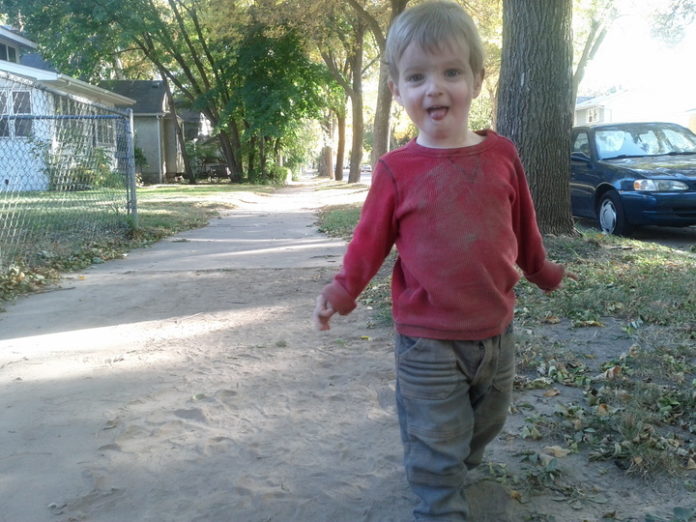
Can somebody please take my child?
For many of us, grandparents or family members aren’t an option, but the idea of dropping off our children with strangers creates an influx of gray hairs atop our heads. So how do you move past the hesitation and seek out a daycare that you and your family can live with?
Finding good daycare can be a little like finding the perfect pair of jeans. Some look great on the rack. Others look good on your particular body. Sometimes the salesperson tells you look fab but you feel an uneasiness coming out of the dressing room.
So how do you choose?
The reality of making the daycare choice is: aside from unsafe conditions, lack of license, or alligators greeting you at the door — choosing a daycare is one of those decisions that depends on fit. Here are the big 4 when it comes to checking out daycare:
#1 Environment Type
In-home or center? According to the Minnesota Department of Human Services, there are two types of daycare operations to choose from:
Family Child Care
This is in-home care where 14 or less children can be cared for at any given moment. If there are non family members of the provider, then a license from the State of Minnesota is required.
Child Care Center
These options can also be Early Learning Centers and are not located in a residential home. Depending on number of staff and qualifications, larger numbers of children are on-site, often with a variety of age groups.
#2 Location, Location, Location
With the multitude of options available across the Twin Cities, location is the most influential factor since you don’t want to create an Odysseus-like journey for yourself or co-parent on a daily or weekly basis. Identifying options that are close to home, on the way to work, or near your school’s campus can make your day easier, and you a much more relaxed parent to your child or children.
# 3 Ratio of Kiddos to Care Providers
One of the prominent facts of daycare websites or fact-sheets is how many children there are compared to care providers. Aside from preventing world-wide mayhem, keeping the ratio in check helps providers manage the needs of your child without overstressing the caregivers. When in doubt, you can always contact the Department of Human Services, but here is an overview by age category provided by the Minnesota guidelines for child care centers:
Age Category Adult:Child Ratio and Maximum Group Size
Infant 1:4, 8
Toddler 1:7, 14
Preschool 1:10, 20
School Age 1:15, 30
#4 Learning Environment
Choosing daycare, preschool, early learning center, or learning boutique? Don’t get fooled by the lingo if you are looking for accredited learning environments. The National Association for the Education of Young Children (NAEYC), National Accreditation Commission for Early Care and Education Programs (NAC), and National Early Childhood Program Accreditation (NECPA) are all options to consider.
Language immersion is another option for Twin Cities toddlers+, and a quick Google search or check of the Minnesota Advocates for Immersion Network website can jumpstart your research.
If, on the other hand, you are looking for a less institutional, homey environment, the options are wide open for learning opportunities. Make sure you use the DHS website to check licensing first and ask about daily schedule — if a blank stare is the response, you might want to keep searching.
Other Considerations?
Everyone has preferences, differences in schedule and lifestyle, and requirements so while it’s great to ask friends, colleagues, and family their opinions on choosing the best fit for daycare, don’t forget to factor in what’s best for your family.
Things like outdoor play time, cost, holiday schedules, drop-off and pick-up times, cleanliness and organization of the visual environment, food & snacks, and even whether they accommodate cloth diapering may be big factors in your decision.
The important thing is that you keep your eyes open, and you and your family feel comfortable with the choice you make. And, remember that changing your mind is OK if circumstances shift. In the end, kids can receive a lot of value from the socialization, learning, and flexibility that comes from leaving home for a few hours or days a week.
















